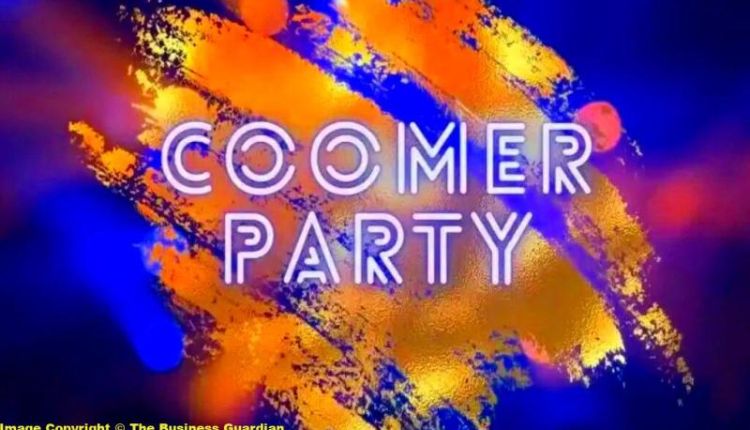Among those emerging net phenomena is the term “party.coomer.” While rooted in a meme culture, the term has observed a broader audience and has taken on layers of meaning that move beyond easy satire. Understanding party coomer requires a dive into meme records, online groups, and the intersections among humour, self-photos, and virtual identity.
The Origins of the Coomer Meme
To apprehend the birthday celebration coomer trend, one needs to first apprehend the base time period “party.coomer”. The Coomer meme, to begin with, surfaced on platforms like 4chan and Reddit around 2018.
It depicted a balding, ravaged man hooked on online personal content material, characterised by a loss of self-control and a compulsive way of life. This cartoon became symbolic of an exaggerated version of online users who are eaten up by using instant gratification.
Evolution Toward the party coomer Persona
The addition of “party.coomer” to the coomer archetype created a brand new sub-identity—one that blends hedonism, social extra, and online irony. The celebration coomer is often portrayed as a person who not only indulges in excessive pleasures online but also seeks out wild, carefree real-life experiences, commonly involving nightlife, events, or unrestrained conduct.
In essence, the celebration coomer is a modern paradox: a person who’s both online and offline in ways that push boundaries, all whilst being self-aware about their hyper-indulgent behaviour.
Visual Aesthetics and Representation in Memes
Much like other memes, celebration coomer is represented with a constant visual fashion. The determiner normally resembles the unique coomer; however, with party accessories like glow sticks, beer cans, shades, or neon lights.
Often juxtaposed with characters just like the “party.coomer,” bloomer”, or “zoomer”, the party coomer exists as an exaggerated outlier within the meme surroundings—a person fully immersed in sensory overload. These depictions are hyperbolic, yet they relate to very actual problems of burnout, escapism, and digital-age loneliness.
Online Communities and the Spread of Party.Coomer
The recognition of the birthday party coomer persona has grown through platforms like Instagram, TikTok, X (previously Twitter), and Discord.
Meme pages and niche subreddits retain the narrative, making the time period recognisable even outside of its original context. In some circles, the label is used sarcastically, while in others, it is worn with ironic pride. It serves as both a complaint and part of a chaotic lifestyle, depending on the lens through which it is viewed.
Irony, Humor, and Social Commentary
At its centre, the party coomer meme operates on a foundation of deep irony. It satirises the lifestyle it appears to glorify, mocking the extremes of hedonistic conduct at the same time as additionally acknowledging the charm of living in the second.
Many users adopt the party.coomer aren’t always living the way of life depicted within the memes; as a substitute, they’re taking part in a shared joke about society’s contradictions, especially the anxiety between discipline and indulgence.
The Psychology Behind the birthday celebration consumer
Beyond the meme, the psychology of birthday party coomer conduct reflects real-world anxieties. In an international landscape increasingly more dominated by screens, notifications, and the pressure to perform or be healthy, a few people gravitate toward overindulgence as a form of insurrection or getaway.
The consistent want for stimulation, both online and offline, can be visible as a coping mechanism for pressure, dissatisfaction, or maybe despair. The birthday celebration coomer archetype personifies these inclinations and gives them a call and image.
Criticism and Controversy Surrounding Party.Coomer
As with many net trends, party.coomer has confronted criticism for selling dangerous existence or trivialising severe problems like addiction, intellectual health, and substance abuse. Some critics argue that normalising the behaviour, even paradoxically, can result in desensitisation.
Others agree that the meme lets in open discussion and satire of difficult habits. The debate continues throughout forums and social channels, reflecting a broader cultural communique about how we depict and interact with severe conduct online.
Impact on Internet Identity and Youth Culture
For many more youthful net users, identification is increasingly shaped via meme subculture and shared language. The birthday celebration coomer turns into one in many digital avatars human beings undertake for specific humor, coping with stress, or constructing social belonging.
Memes like this one serve as mirrors of a cutting-edge children’s party.coomer, reflecting trends, fears, and desires in ways that might be both pleasing and deeply telling. As generations develop online, their understanding of self is frequently filtered via those hyper-ironic virtual expressions.
How Brands and Influencers Use the Trend
In a technology where virality is gold, influencers and even brands have begun to contain meme language—together with celebration commerce—in their marketing strategies.
While party.coomer, referencing such traits can enhance engagement, especially among Gen Z audiences who are fluent in meme-speak. However, misuse or misinterpretation can backfire, resulting in blowback moments or backlash for performing out of context or exploitatively.
The Future of Celebration Comes as a Party.Coomer
The internet has a brief party.coomer, but a few memes evolve beyond their shelf life. The birthday celebration coomer persona may additionally in the end fade or transform into something new, reflecting the ever-moving values and humour of digital society.
Yet its legacy can also bear the weight of a photograph of a particular second in time—one defined via hyper-connectivity, intellectual burnout, and the paradoxical pursuit of a laugh in a world that regularly feels overwhelming.
Conclusion
The rise of the party.coomer meme highlights how net humour has become a rich language for exploring complex elements of present-day life. While the character can also appear absurd or comedic at first glance, it gives a layered critique of overindulgence, escapism, and virtual fatigue. Whether visible as satire, self-parody, or social commentary, party coomer stands as but any other instance of the way meme tradition offers shape and voice to the chaos of modern existence. Understanding it isn’t just about laughing at the image—it’s about spotting the truths that lie behind the jokes.


